If your brand has accounts on multiple social media accounts, your job involves juggling metrics, audiences, and goals specific to each platform. Making sense of it all and maintaining an active, on-brand presence across networks can be a challenge.
Wondering how to turn a bunch of scattered social media post ideas into a cohesive, powerful cross-platform campaign that leverages the best opportunities of each platform? You’ve come to the right place!
Bonus: Read the step-by-step social media strategy guide with pro tips on how to grow your social media presence.
What is a cross-platform campaign?
Cross-platform campaigns are social media campaigns run across multiple platforms. They meet your audience where they’re at with messaging tailored to each platform that generates awareness, interest and conversions.
By creating original content aligned with the spirit of each platform, your marketing becomes a seamless omnichannel experience instead of “that ad feeling” people are eager to escape from. Additionally, tailoring your campaign to each platform’s posting specifications means you’ll have the best chance of your audience actually engaging with you.
What are the benefits of cross-platform campaigns?
Besides keeping you from looking a fool when Twitter cuts off your 400 word LinkedIn masterpiece mid-sentence at 280 characters, there are many benefits to cross-platform campaigns:
- Different platforms suit different goals. For examples, you might be building awareness on Instagram and Twitter, but converting from Facebook ads.
- Some platforms are visual, some are text-based. A cross-platform strategy ensures your content makes sense where it’s posted.
- They yield greater reach than single-platform campaigns, or “copy and paste” campaigns (recycling the same captions and images, even if they’re not optimized for that platform’s specs).
- Consistent branding builds loyalty and trust.
9 tips for planning a winning cross-platform campaign
1. Have a plan
If your current advertising campaign strategy consists of, “Promote new product launch,” then we need to have a talk.
Make sure every campaign plan you put together includes S.M.A.R.T. goals, audience research, who’s doing what and deadlines for posting. Use our free cross-platform campaign template to ensure you’re starting off strong.
2. Set platform-specific goals
OK, beyond the campaign’s goals, set goals for each of the platforms you’ll be using, too.
Some of those goals will flow naturally since certain platforms are geared toward specific goals.
- Instagram: Creative visual content, like Reels and Stories, to promote engagement and discovery.
- Pinterest: Product and shopping-focused visuals to drive conversions.
- LinkedIn: B2B-focused marketing campaigns and brand building.
- Facebook: …Letting your grandma know. (Okay, okay, kidding.)
- And so on, for all the platforms in your campaign.
Of course, each platform can have multiple goals. For example, you can use Pinterest for both brand awareness and driving conversions. But generally speaking, set one or two goals per platform to focus on.
3. Say no to copy paste
It’s fine to repeat a key phrase throughout your campaign but you definitely want to avoid using the same word-for-word copy and visuals across multiple channels.
That defeats the purpose of a “multi-platform campaign,” right?
Each social media platform is different, from how many characters or hashtags you get to use to how well certain types of content perform. Optimize your content for each platform’s post specifications and target demographic.
Plus, insider info people always say, like “link in bio” on Instagram or the latest dance trend on TikTok. Those phrases only make sense on the platform they’re meant to be on, like in this short-but-sweet event announcement from Peter McKinnon.
4. Be available to chat
Don’t post and ghost!
Social media is a two-way street. Your customers expect to be able to talk to you. In fact, 64% of them would rather message you than call a 1-800 number for help.
Respond to comments and direct messages quickly to answer customer questions and encourage engagement.
Don’t panic: Hootsuite Inbox makes managing your comments and DMs across all platforms quick and painless. By compiling all your notifications in one place, you can quickly reply to your followers and be sure you’re not missing anything.
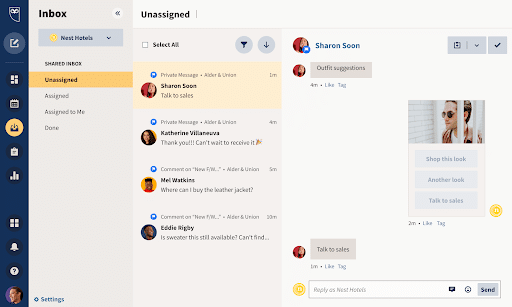
Best part? You can assign responses to team members or see only comments needing a reply. Your social media managers can work efficiently together.
In addition to responding on social media, make it easy for customers to ask questions quickly pre- or post-purchase from your website.
Live chat apps are great for both your website and across social channels, like Facebook Messenger. Tools like Heyday can use either AI-powered live chat to keep costs down, or enable your (human) customer service reps to chat with customers for the best service.
If your team will be handling chats, Heyday organizes messages and allows you to assign them to specific people or archive old threads. This way all customers receive quick replies.
5. Use paid and organic strategies together
Just like how you wouldn’t bank your entire campaign on one social network, you wouldn’t rely only on organic traffic, right?
That doesn’t mean you should hit the “promote” button on every post to boost it as an ad. Not everything needs an amplified reach with a budget behind it. But if your organic posts aren’t getting much traction, try boosting a few more than usual to see if that brings up your views and engagement.
Alternatively, if an organic post is really taking off, why not give it an extra push by promoting it?
Think about what you should promote versus what you shouldn’t.
Bonus: Read the step-by-step social media strategy guide with pro tips on how to grow your social media presence.
For acquisition ads, focus on one key message — like this bag’s adaptability — and even better if you can add something eye-catching, like unique design or in this case, video.
You can make the process of handling organic and paid social posts side by side with the right tools.
Hootsuite Social Advertising makes it possible to create, schedule, and review organic and paid content, easily pull actionable analytics and build custom reports to prove the ROI of all your posts — from one easy to use dashboard.
With a unified overview of all social media activity, you can act fast to make data-informed adjustments to live campaigns (and get the most out of your budget). For example, if an ad is doing well on Facebook, you can adjust ad spend across other platforms to support it. On the same note, if a campaign is flopping, you can pause it and redistribute the budget, all without leaving your Hootsuite dashboard.
6. Optimize your profiles for sales
Often, your content is going to direct people to a landing page or your website to take an action: Signing up for an event, making a purchase, etc.
But not every post needs to push people offsite.
While social commerce is nothing new, people are buying things directly from social media more every year. The pandemic has only served to bolster this, with social media purchases predicted to grow 30% annually through 2026.
Source: Statista
To optimize your profiles for social commerce, try:
Adding a call to action in your bio and link area
Instagram puts your bio and link front and center. But, like most other platforms, you only get one link so make it count.
Add a call to action in your bio and either change your link to be relevant to your current campaign or posts, or direct that link to a page containing multiple links. Make it clear why users should click the link and what they’ll get out of it.
On Facebook, you can customize an action button to feature on your profile.
For software companies, that’s often a “Sign Up” button, but there are many to choose from, such as online booking links, sending an email, calling and more.
Including search terms in your name or username
Depending on your company name, this may not make sense. But try to include a keyword about what you do either in your username or the name field in your profile.
Instagram uses those fields in search, so this can help you get discovered. For example, here’s what searching for “furniture” brings up:
Some brands have the word in their username, such as @wazofurniture, others in their profile, such as @qlivingfurniture.
Many other social platforms operate their search the same way, such as Facebook and Pinterest.
Getting verified
Many platforms use a blue checkmark to show the brand or person is the real deal. That helps build trust and indicates that users have found the right profile (versus a fake or unofficial version).
Each platform has their own rules but if you meet the requirements for each of your networks, apply for verification.
7. Track your analytics
Tracking results is important for any campaign but it’s essential with cross-platform campaigns. You need to tie everything together to form a cohesive picture of how the campaign went and what you could change next time.
Sounds like trying to tape together a shredded document, right? You gotta find all the reports, match them up, compare performance…
Not if you use a social media analytics tool. For example, Hootsuite Analytics does all that for you.
All you have to do is log in and Hootsuite Analytics is there, compiling all your social media platforms into one easy-to-understand, cross-platform and fully customizable report.
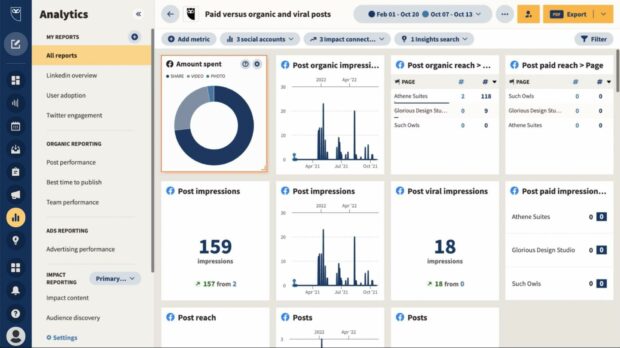
And, going a step further than just the numbers, Hootsuite Impact puts it all in perspective. It measures the real ROI of your social media marketing — organic and paid — and translates that into actionable statistics, visual data and insights that are easy to share with stakeholders.
8. Add UTM tags to your links
UTM tags go hand-in-hand with analytics tracking. UTM tags are just small text codes you add to link URLs to define the source of traffic.
These are especially helpful for cross-platform campaigns to figure out where the majority of your leads came from and what types of content drove the most traffic.
For example, if my goal is to convert people on a landing page, then I’m probably linking to that from:
- Email marketing
- + other social channels
- My website
And I could even be linking to it from:
- Affiliate partners
- Free content sites, such as Medium or Quora
- Paid ads
Adding a unique UTM tag to each of the links I use on those platforms will let me track, with certainty, where users came from to my landing page. You can create UTM tags for free with tools like Google’s Campaign URL Builder.
When it comes to social media posts, here’s how to add UTM tags easily in Hootsuite:
9. Schedule your content
Last but definitely not least, for a cross-platform campaign to work (or any campaign, really), you need to plan and schedule your content in advance.
I mean, it’s just a smart thing to do, but planning ahead will also:
- Ensure your posts complement each other across platforms (e.g. you’re not announcing a new product on only one channel while forgetting the others, etc).
- Eliminate errors.
- Free up your team’s time to respond to comments,
learn TikTok dances,create more content and everything else except worrying about what to post next. - Create a consistent posting schedule to keep engagement high.
Can you guess what I’m gonna say next?
Yeah, Hootsuite can schedule your stuff. We’ve said that already. But what you may not know is Hootsuite can also tell you the best time to publish, based on your unique audience stats:
3 inspiring cross-platform social media campaign examples
1. Turn Down for Wheel of Time
While you may not have as big a budget as Amazon, you gotta admire the storytelling power behind their campaign for their new show, The Wheel of Time. It launched with a massive cross-platform campaign consisting of all the organic basics — social media, owned media, etc — plus paid ads that made a splash.
The show is all about an immersive fantasy world, so what better way to lure people into it than by literally luring them into it? Amazon put up this wild 3D billboard in London’s Piccadilly Circus.
The Dark One's forces have arrived in London, Piccadilly Circus but Moiraine rises to meet them. #TheWheelOfTime premieres November 19th, come join the fight?
pic.twitter.com/1C2VEsWVT2
— Prime Video UK (@primevideouk) November 15, 2021
Yes, it’s jumping out of the billboard because… magic.
In addition to this marketing strategy to engage the public, Amazon also kept in mind the hardcore fans of the book series the show is based on. Amazon engaged smaller creators within the existing book fandom to build excitement among their core target audience, including creating an official after-show livestream.
These thoughtful executions were paired with all the basics like in-app Prime Video ads, retargeting ads, engaging organic social content and more.
What did all this get Amazon? Only the biggest launch for Amazon Prime ever, the #1 show in the world and over 1.16 billion streamed minutes in the first 3 days of the premiere alone. At least 50,000 of those were me, though, for sure.
2. Bringing nostalgia into the future
Coca-Cola has included Santa Claus in their holiday campaign branding for decades. Their 2021 holiday campaign touched on that sense of nostalgia during a time the world seemed to need an escape the most, as the global pandemic stretched to almost two years long.
Luckily, Wi-Fi has now reached the North Pole, as Coca-Cola offered not only a heartwarming campaign about the magic of Christmas, but also live, personalized greetings from Santa himself, thanks to a partnership with Cameo.
The campaign successfully carried out a tricky goal: Giving their customers what they really want — connection and the magic of the season — in a way that combined the best of their branding with new media.
3. Guinness perfectly captures a moment in time
A white cat laying on a waste bin. A canvas grocery cart. A washing machine frothing. What do these things have in common?
Guinness read many of their customers’ minds when putting together this campaign titled #LooksLikeGuinness, featuring creative imagery of things that remind us, in color and shape, of the iconic beer.
Pubs across the UK opened back up in May 2021 after an extensive lockdown. Guinness knew their loyal customer base missed hitting the pub for a pint with friends and ran with the idea. You know when you’re thinking about something and start to see it everywhere? The ad was simple and captured that feeling well, ending on a hopeful note of, “Good things come to those who wait.”
The brand took it multi-platform by asking fans to share photos of things that reminded them of Guinness with the hashtag #LooksLikeGuinness.
The result? Guinness was the most-talked-about brand on social media during the week pubs reopened and earned a 350% higher engagement rate than the standard benchmark.
Keep your finger on the pulse of all your cross-platform campaigns with Hootsuite’s unique tools, including Inbox for engagement management and Impact to easily measure the ROI of your organic and paid social media campaigns. Get crackin’ on your next growth campaign with a free trial of Hootsuite.
Easily manage all your social media in one place and save time with Hootsuite.
The post How to Plan a Winning Cross-Platform Campaign: Tips and Examples appeared first on Social Media Marketing & Management Dashboard.

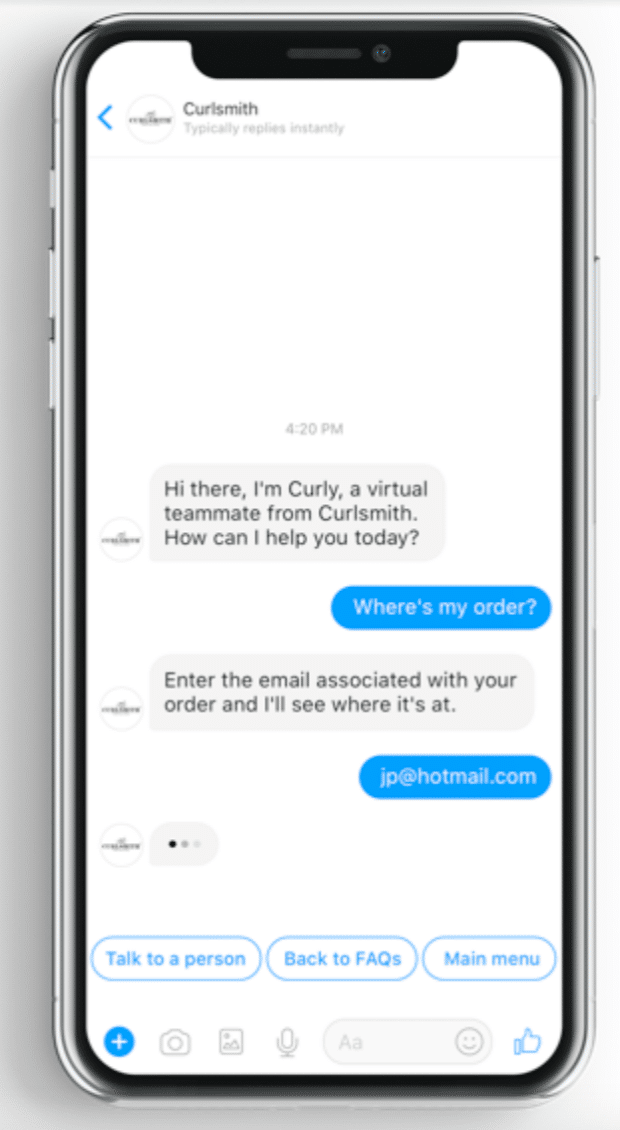
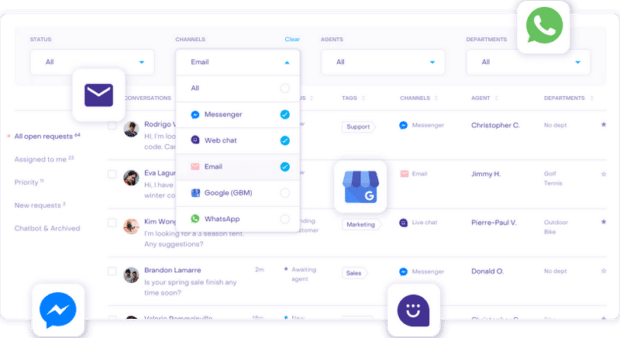

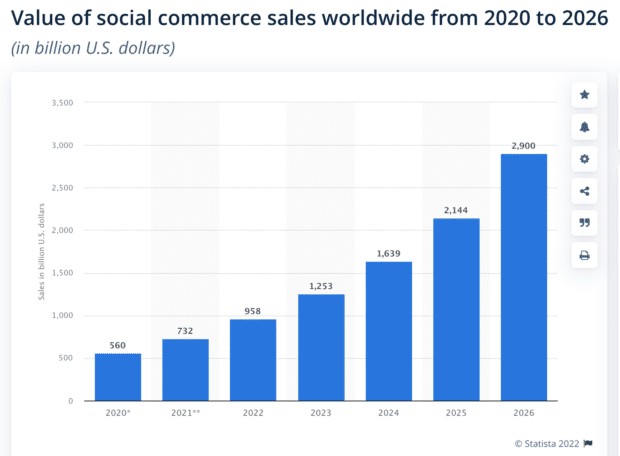


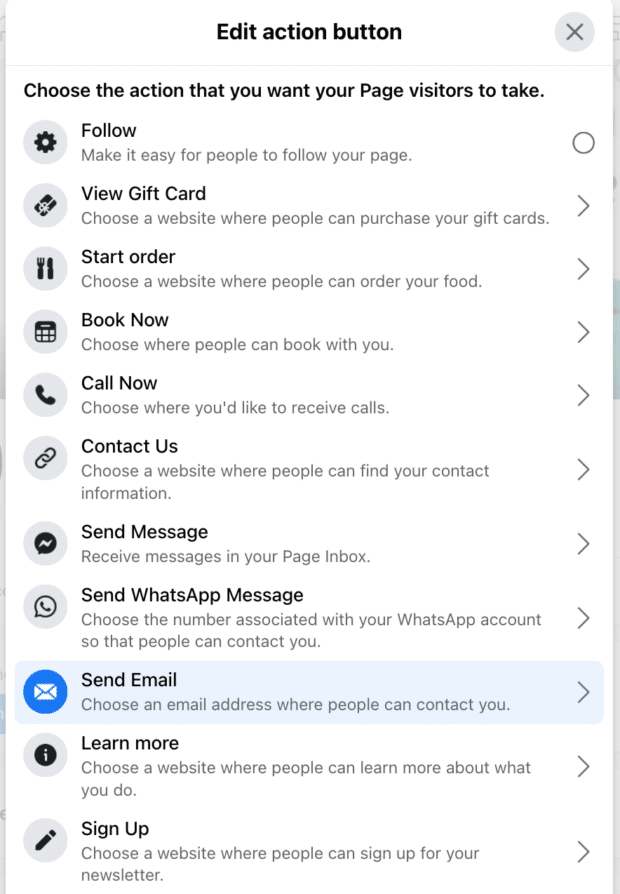

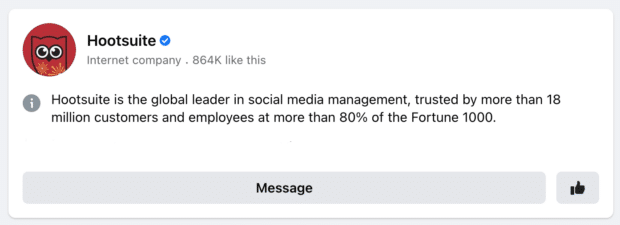





Recent Comments